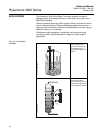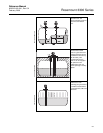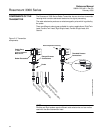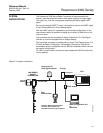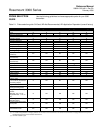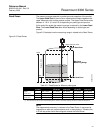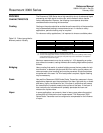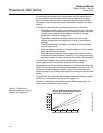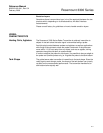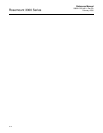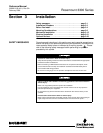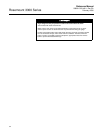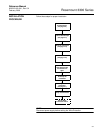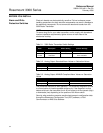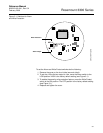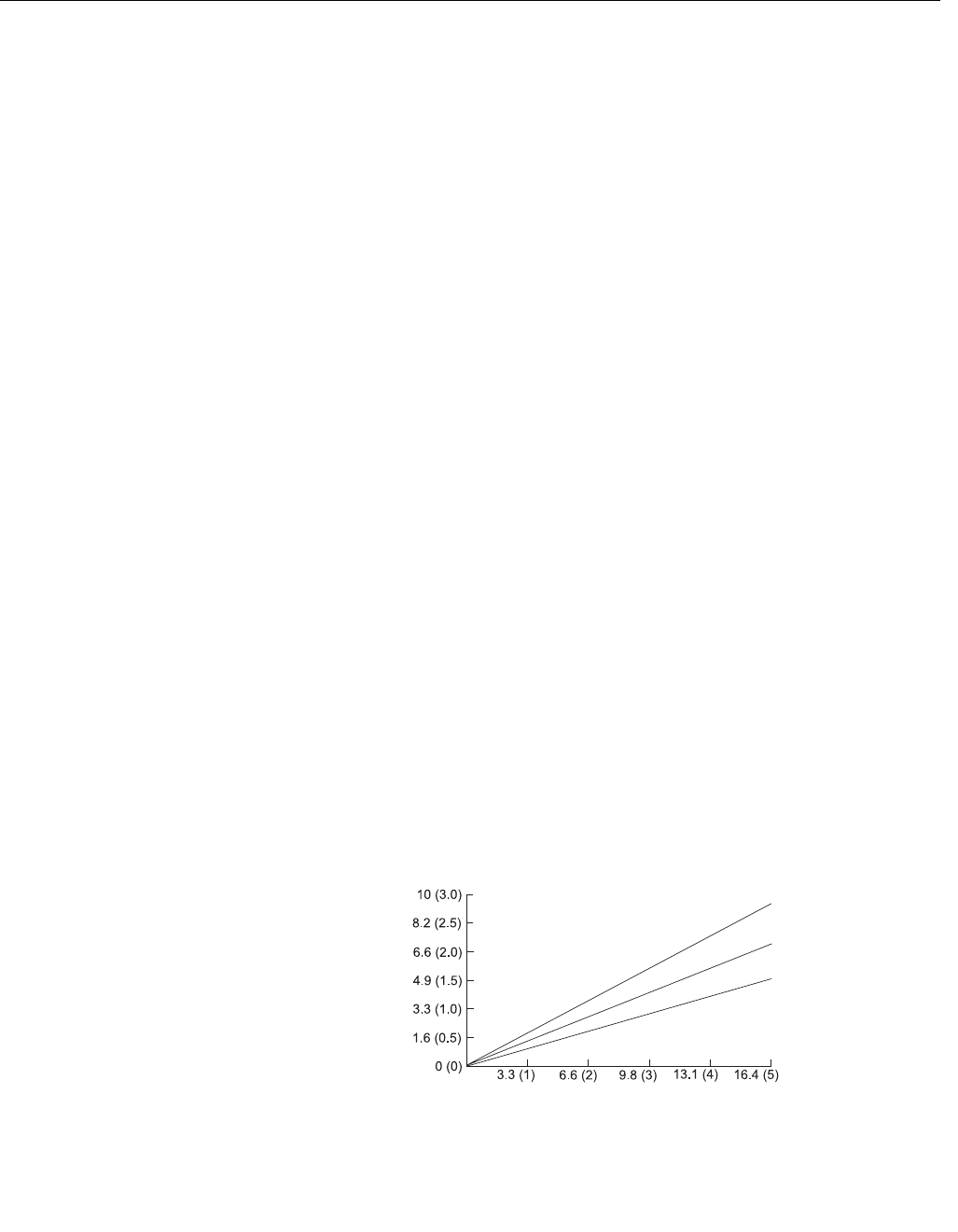
Reference Manual
00809-0100-4811, Rev CA
February 2006
Rosemount 3300 Series
2-10
For measuring the interface level, the transmitter uses the residual wave of
the first reflection. Part of the wave, which was not reflected at the upper
product surface, continues until it is reflected at the lower product surface.
The speed of this wave depends fully on the dielectric constant of the upper
product.
If interface is to be measured, the following criteria have to be fulfilled:
• The dielectric constant of the upper product must be known. The Radar
Configuration Tools software has a built-in dielectric constant calculator
to assist users in determining the dielectric constant of the upper
product (see “Dielectrics” on page 4-21).
• The dielectric constant of the upper product must have a lower
dielectric constant than the lower product in order to have a distinct
reflection.
• The difference between the dielectric constants for the two products
must be larger than 10.
• Maximum dielectric constant for the upper product is 10 for the coaxial
probe and 5 for twin lead probes.
• The upper product thickness must be larger than 8 inches (0.2 m) for
the flexible twin lead probe and 4 inches (0.1 m) for the rigid twin lead
and coaxial probes in order to distinguish the echoes of the two liquids.
The maximum allowable upper product thickness/measuring range is
primarily determined by the dielectric constants of the two liquids.
Target applications include interfaces between oil/oil-like and water/water-like
liquids. For such applications the upper product dielectric constant is low (<3)
and the lower product dielectric constant is high (>20), and the maximum
measuring range is only limited by the length of the coaxial and rigid twin lead
probes.
For the flexible twin lead probe, the reduction of maximum measuring range
(65 ft/20 m), can be gained from Figure 2-7 on page 2-10.
However, characteristics varies widely between different applications. For
other product combinations, consult factory.
Figure 2-7. Reduction of
maximum measuring range for
Flexible Twin Lead probe
Reduction of Maximum Measuring Range for
different Upper Product Dielectric constants.
Flexible Twin Lead probe (ft/m)
Maximum Upper Product Thickness (ft/m)
INTERFACE_REDUCTION_SCALE
3
3.5
2



